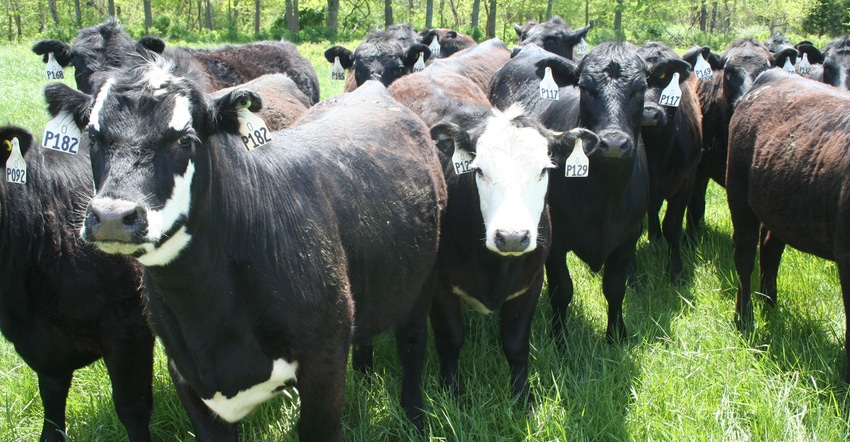Business Basics: Want more cattle? Limit grazing cows, boost forage production and add stockers.
March 10, 2021

Working with producers through the years, I’ve learned many of us are infected with a very costly disease. I call it egonomics.
If your farm’s optimal stocking rate is 25 cows, you lie awake at night dreaming of how life would be if you had 40. If you run 500 cows, you dream of 750. Egonomics infects us all.
I’ve asked many producers why this is, and they usually respond that they want their operation to be bigger so it will make more money. But I don’t really think that’s it at all. It’s all about self-worth.
Someone living in town wants a bass boat sitting in their driveway bigger than the neighbor's across the street. For farmers, what drives value is far different. Actually, it boils down to if you live north of the Missouri River, your feeling of self-worth comes from how many acres you row-crop. South of the river, it’s how many cows you run.
Stocking rate impact
In my 20 years of working with University of Missouri Extension, I’ve come to realize one thing separates profitable from unprofitable beef producers — stocking rate.
How many cows you run for the size of your farm matters financially. You might be saying it doesn’t take an ag economist to tell me that. Obviously, the more cows I can run, the more money I make. Not necessarily.
Missouri is a fescue state. Therefore, we grow two-thirds of our forage in the spring and one-third in the fall. To be able to feed a cow for 365 days, we’ve developed a system of baling excess forage in the spring and feeding it in the winter. Most producers run out of grass by New Year’s Eve and are forced to start feeding hay, so what does that cost you?
You might be surprised to know that 62% of the cost of feeding a cow for the year occurs in January, February and March. Yes, you read that correctly. Cattle producers spend more to feed a cow in 90 days than we do for the entire rest of the year.
The easiest way to cut feed costs is reduce the number of days you feed hay and graze more. With a few less cows heading into winter or lower stocking rate, you can stockpile fall forage and strip-graze it all winter long. It’s why God gave ruminants four legs. They were made to walk with their head on the ground, harvesting their daily feed as they go.
But what if you could produce more calves? Would that help ease the pain of owning a few less cows? For producers that lower their stocking rate to match the forage they grow in the fall and stockpile for winter grazing, what do they do with extra spring grass they typically baled as hay? The answer is another enterprise — stockers.
Manage your grass
Research at the University of Missouri’s Southwest Center Experiment Station by Eric Bailey has shown exceptional rates of gain on stocker calves when they are stocked heavily in the spring.
The addition of a short-season stocker enterprise more appropriately matches the fescue growth curve and can substantially increase profitability of the operation. Fall calving herds already have this built-in stocker enterprise for producers who can pivot to grazing calves to heavier weights.
Adding stockers also offers a way to mitigate the dry days. Every three to four years, it seems we are encountering drought conditions. When it gets dry, producers are forced to sell cows or buy expensive hay.
Through the years, I’ve witnessed producers who use a combination of cow-calf and stockers usually make it through droughts better than their neighbors. When dryness occurs, they put wheels under the stockers. With a lower stocking rate of mature cows, they are already closer to where they need to be, without requiring additional liquidation.
The best risk management plan for a cow-calf operation is to always have disposable animals who can be loaded at a moment’s notice if needed.
So, do you graze the optimal number of cows for your farm, or are you being influenced by egonomics? Stocking rate and its influence on feed costs often is the difference between profits and losses for beef producers. Consider the addition of short-season stockers to your operation to increase flexibility and profits of the operation.
Tucker is a University of Missouri Extension ag business specialist and succession planner. He is a fourth-generation farmer raising cattle in southwest Missouri. He can be reached at [email protected] or 417-326-4916.
You May Also Like



